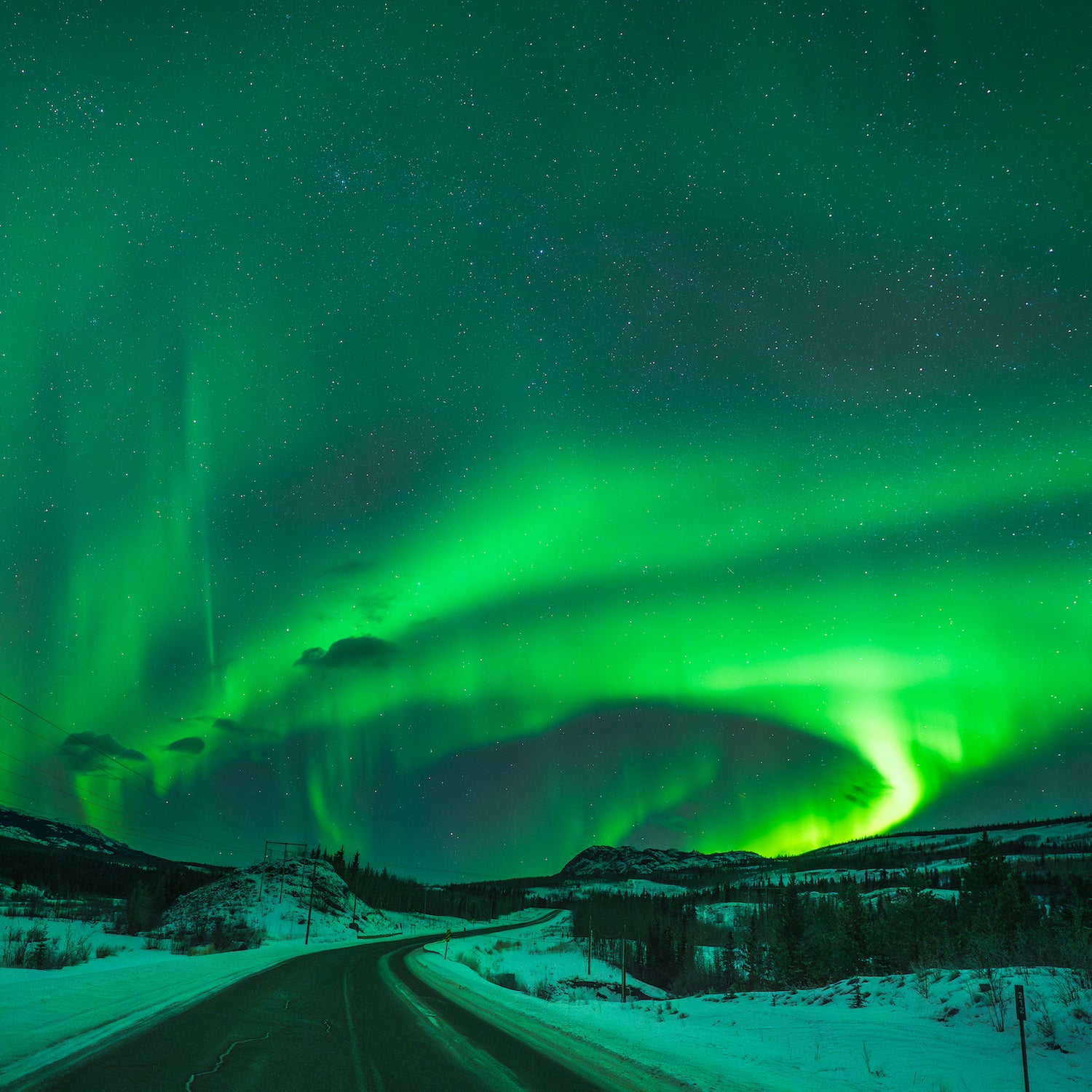Of all the road trips I’ve plotted in my travel writing career, the best had this in common: they were scenic, they were unhurried, and they capped each day beneath the cosmos. The following astro-meets-adventure itineraries tick every box.
There’s no better way to celebrate the start of road trip season—as well as from April 21 to 28—than by taking a long, star-focused drive. Some of these itineraries might already be on your list, others may surprise you, and all can be completed in a long weekend. Here are the best stargazing road trips in North America.
Cook County Aurora Route
3+ nights | Northern Minnesota
Cook County is among the northernmost points in the continental U.S. That makes this Lake Superior region arguably the best place in the lower 48 to chase the aurora. Here’s a 140-mile out-and-back drive through northern Minnesota’s forested fringes.
- Lutsen: Start roughly 90 miles north of Duluth for a stint on the 300-mile Superior Hiking Trail by day. Trek by day, then unwind beneath the stars after dusk. Sprinkle in some wellness with a stay at , where each abode has a private sauna with forest-view windows.
- Grand Marais: Drive 20 minutes north along the lake to reach Grand Marais, a spirited arts community. See the stars in unmitigated splendor on a guided night-vision hike with , a first-of-its-kind outfitter located just outside of Grand Marais. To optimize your aurora odds, book an accommodation within walking distance of ideal lights-hunting perch Artist’s Point (like ).
- Gunflint Trail: Sip your last dregs of city life before heading an hour inland on the 57-mile Gunflint Trail. This traverse, thick with maples and birches, is famous for its numerous moose sightings. For remote stargazing, reserve digs like or pitch your tent at a local campground (typically open starting in May). If you have time, set aside another day to explore nearby Boundary Waters Canoe Area Wilderness, another DarkSky Sanctuary
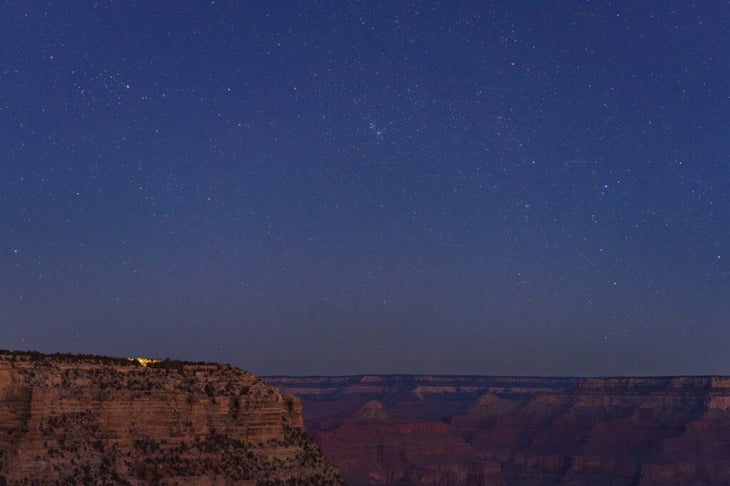
The Arizona Traverse
3+ nights | Arizona
Inky nightscapes abound in Arizona, where global light pollution authority DarkSky International has certified more than two dozen astronomical getaways. Catch the cosmos on this 340-mile road trip, which weaves northward through the Grand Canyon State’s space-watching hotspots. Consider adding a few detours, like Petrified Forest National Park. Your adventure starts in Tucson, and can end in Flagstaff or Las Vegas—both major Southwest transit hubs.
- Tucson: Start your Arizona Traverse on the new , a mini road trip in itself that connects a dozen astronomy attractions in and around the city. Highlights include Kitt Peak National Observatory, home to one of the world’s largest radio telescopes, and Saguaro National Park, a DarkSky-certified escape where towering cacti pierce a sparkly night sky. Camping is available in six designated Saguaro Wilderness Area campgrounds. (Note: the sites are only accessible by foot.)
- Sedona: Head roughly three hours north of Tucson for stop number two, Sedona, another DarkSky-certified destination with star-view options galore. Admire the silvery pinpricks from Beaverhead Flat Scenic Overlook or the Aerie trailhead. Or, watch for stars and peculiar flying objects on a guided UFO tour. Reserve accommodations like to enjoy the dark-sky splendor from bed.
- Grand Canyon National Park: There’s nothing like sky-watching from the spellbinding Grand Canyon, whether it’s a ranger-guided astronomy session on the South Rim, or DIY stargazing on the remote North Rim, which is open from mid-May to mid-October. For the ultimate twilight treat, try the lottery for a sleep at Phantom Ranch, the only lodging on the Grand Canyon’s base.
Baja Coast to Coast
2+ nights | Baja Sur, Mexico
You could make a multi-month adventure out of zigzagging along Baja’s many natural and night-sky attractions. But for those who don’t have unlimited PTO, here’s a bite-sized, 100-mile trip from the Gulf of California to the Pacific coast. You could tackle this road trip in a quick weekend, but I recommend at least four nights to soak up the culture and daytime marvels.
- Loreto: Start your Baja Sur weekend in Loreto, a seaside town famous for its blue whales, national parks, beach clambakes, and—thanks to a recent community movement—stargazing. The local astronomy club Cielo Magic hosts for residents and tourists in town. There’s also a local sky-watching meetup every Friday near the main plaza. Or, take a roughly 30-minute drive out of town to admire the planets and stars in the foothills of the Sierra de la Giganta mountains. Stay at historic and centrally located , which has a rooftop for space-gazing above the main square.
- Puerto Adolfo Lopez Mateos: Crisscross the peninsula’s mountainous interior to reach this tiny coastal town—a magnet for whale watchers between January and March. But marine life isn’t the only reason to visit. You can also book twilight sand dune tours and picnics through local outfitters. Overnight at an before heading back to Loreto the next day.
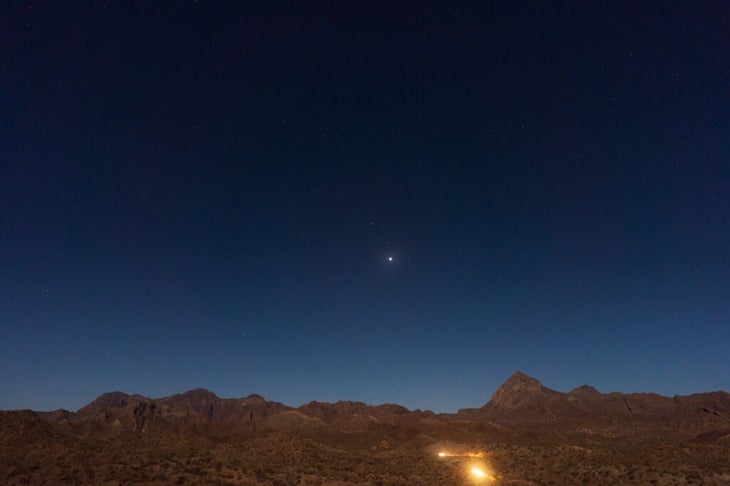
Oregon Outback
3+ nights | Central-South Oregon
Few destinations top stargazers’ bucket lists like the Australian Outback, but most don’t know that the U.S. has its own version much closer to home: the Oregon Outback, a stretch of high desert in the state’s central and southern regions. The region’s half-dozen DarkSky destinations are all within a few hours’ driving distance. Consider spending an additional evening in Sisters, an artsy DarkSky-certified community just outside of Bend.
- Prineville Reservoir State Park: Begin an hour from Bend at Prineville Reservoir State Park, a stop with kayaking, paddle boarding, swimming, and fishing, as well as year-round for all-hours star access. If you’re more of a glamper, book one of the park’s five deluxe log cabins to start your trip in style.
- Summer Lake: A three-hour drive south of Prineville Reservoir will drop you in the 2.5-million-acre Oregon Outback International Dark Sky Sanctuary. Try the Summer Lake Wildlife Area for birdwatching in the marshes and camping beneath the cosmos. Or, upgrade your visit with a stay at the , a collection of campsites and cabins with onsite soaking pools.
- Hart Mountain National Antelope Refuge: This remote, high-elevation refuge—just three hours southeast of Summer Lake—is the ultimate Pacific Northwest retreat for space lovers. Pitch a tent for free at to snooze beneath the stars, then spend your daytime hours searching for petroglyphs or hiking to see pronghorns, pikas, and bighorn sheep.
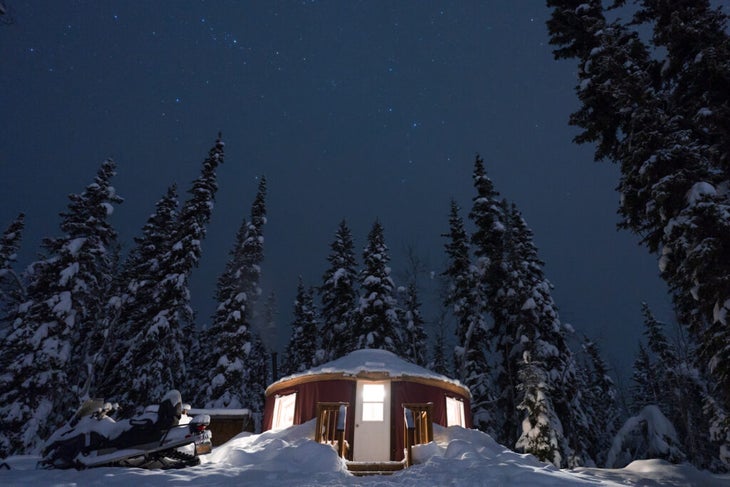
Nova Scotia to New Brunswick
3+ nights | Eastern Canada
Life in Atlantic Canada centers on the sea, but don’t sleep on this maritime region’s starry skies. Three Dark Sky Preserves lie within a picturesque, six-hour road trip across the region. You’ll start in Halifax and end in Moncton, though you can add stops like Prince Edward Island along the way.
- Kejimkujik National Park and National Historic Site: Kejimkujik’s thick pine forests, set two hours west of Halifax, brim with natural wonders and Mi’kmaw culture. Try hiking or biking through forests or along the coast, or take a to follow the footsteps of the area’s earliest humans. After sunset, snag a campsite (open mid-May to late October) and point your eyes skyward for a glimmering twilight fresco.
- Fundy National Park: A four-hour drive north will lead you to Fundy National Park, home to the highest tides in the world. Explore the expansive mud flats and craggy coasts in the afternoon, then watch for planets and stars by camping in the Dark Sky Preserve (sites and yurts available year-round).
- Kouchibouguac National Park: Conclude your journey with a 115-mile drive up to Kouchibouguac National Park, a mosaic of honey-hued dunes and sprawling wetlands. Spend daylight looking for river otters and seals, or mountain biking the park’s nearly 40-mile trail system. Camping, available from mid-May to late October, provides the best twilight view. You can also try a nearby cabin, , and visit the park at night.
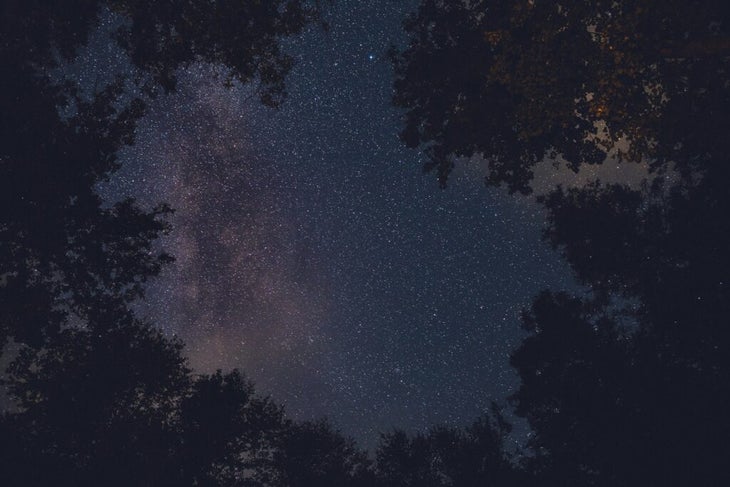
Across the Appalachians
3+ nights | West Virginia to Virginia
Link up three DarkSky getaways just a short trip from D.C. This Virginia-West Virginia adventure totals roughly 150 miles point-to-point. Spend more time in West Virginia’s Monongahela National Forest, a rock-climbing oasis, if your PTO allows.
- Watoga State Park: Drive four hours west of Washington, D.C., or 2.5 hours north of Roanoke, for a starry retreat with all sorts of aquatic adventures. Watoga State Park, a 10,000-acre getaway with swimming, fishing, boating, and hiking, is part of one of the east coast’s largest DarkSky-certified areas. Overnighting in one of the park’s (from $157), or pitching a tent at one of its three (from $50), puts you smack-dab in the stargazing action.
- Natural Bridge State Park: Cross state borders to reach Natural Bridge State Park, a two-hour drive east of Watoga. This DarkSky-certified spot is full of karst terrain and navigable caverns. The park will host events starting April 25. Alternatively, book a primitive campsite or at a nearby campground and do your own star-watching from there.
- James River State Park: Around 60 miles east of Natural Bridge State Park, this Virginia escape offers pristine twilight skies and plenty of overnight accommodations, from park-run to full-service campsites. Spend your non-astronomy hours hiking the scenic 3.5-mile Cabell Trail or angling for smallmouth bass or catfish.
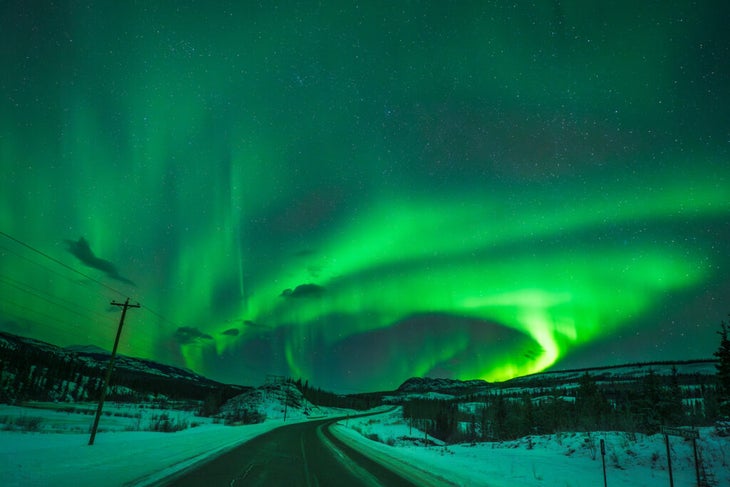
Klondike Highway
3+ nights | Yukon Territory, Canada
This historic highway parallels the route miners traversed during the Klondike Gold Rush. It’s also one of the continent’s best night-sky drives. Fortunately, you can tag some of the best bits in a long weekend. Start in Whitehorse, drive six hours up to Dawson City, then head back the way you came.
- Whitehorse: The aurora often flickers above Whitehorse, the Yukon territory’s main city, between early fall and spring. Book a private telescope session at the Yukon Astronomical Society’s Observatory, or try beneath the aurora. Come summer, enjoy another astronomical marvel: the midnight sun. Sleep just outside of town at forest-fringed , a quiet escape tucked amid evergreens.
- Carmacks: Just two hours north of Whitehorse, you’ll find the quiet riverside town of Carmacks. Local companies offer aurora tours from mid-August to mid-April. Hit the hay at a hotel in town, then stock up on road-trip snacks at the general store for the next leg of your drive.
Dawson City: After the 220-mile drive from Carmacks, your arrival in Dawson City will feel like striking gold. This National Historic Site overflows with Indigenous and gold-rush history. Explore downtown on foot, then admire the nightscapes from a yurt. If you’re here for the midnight sun, try summer camping up in mountainous Tombstone Territorial Park, a protected area on the Dempster Highway.


